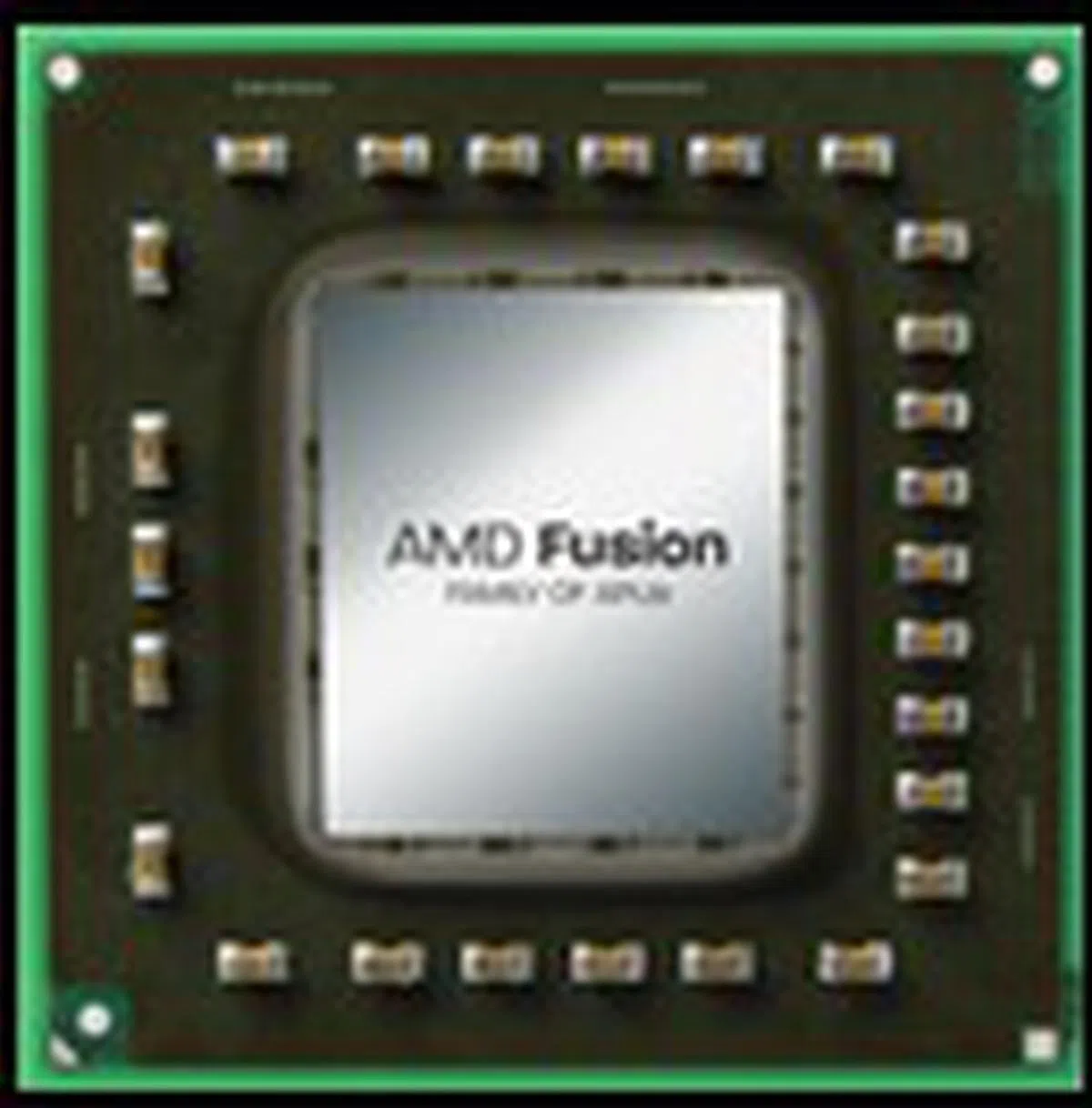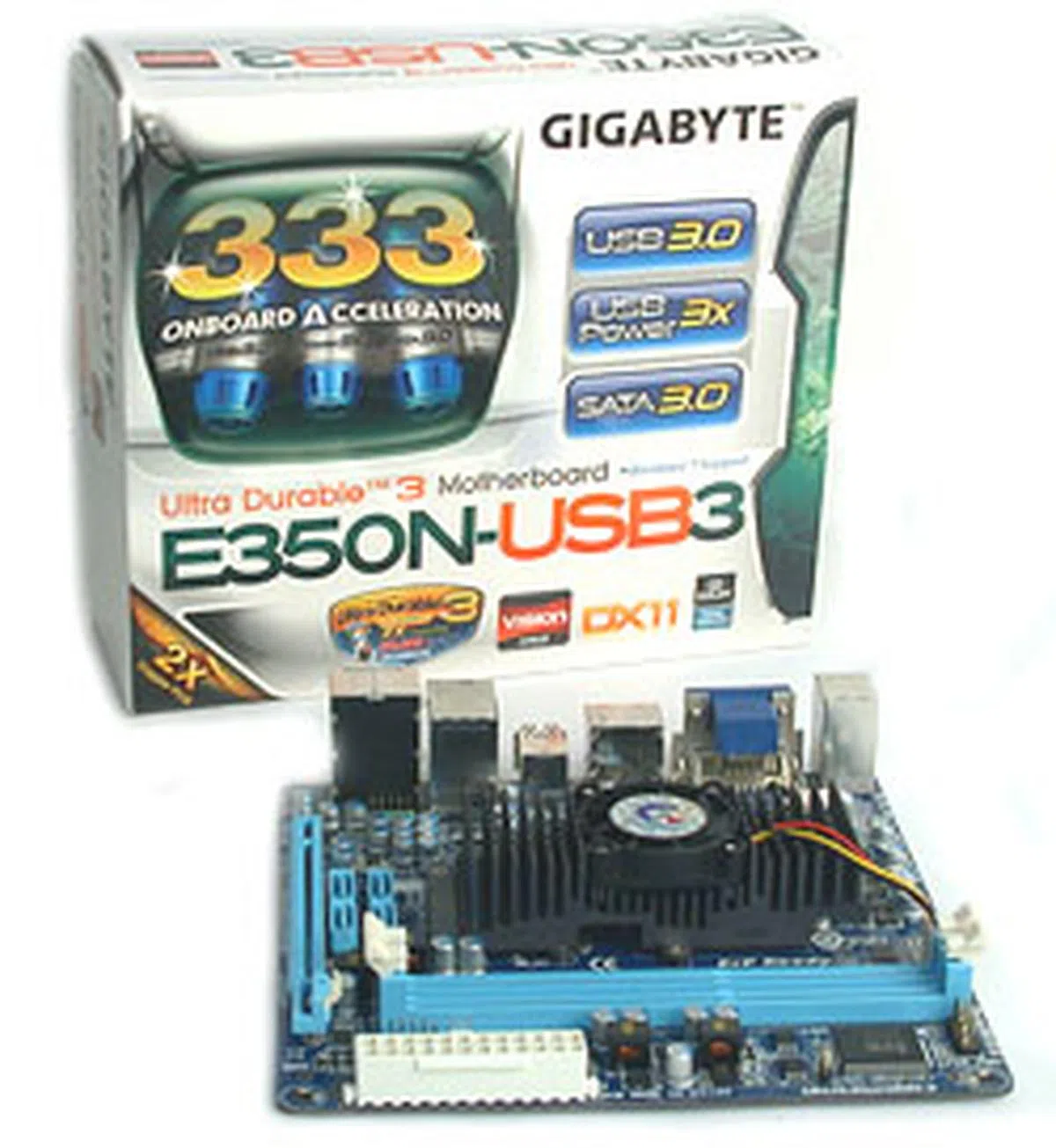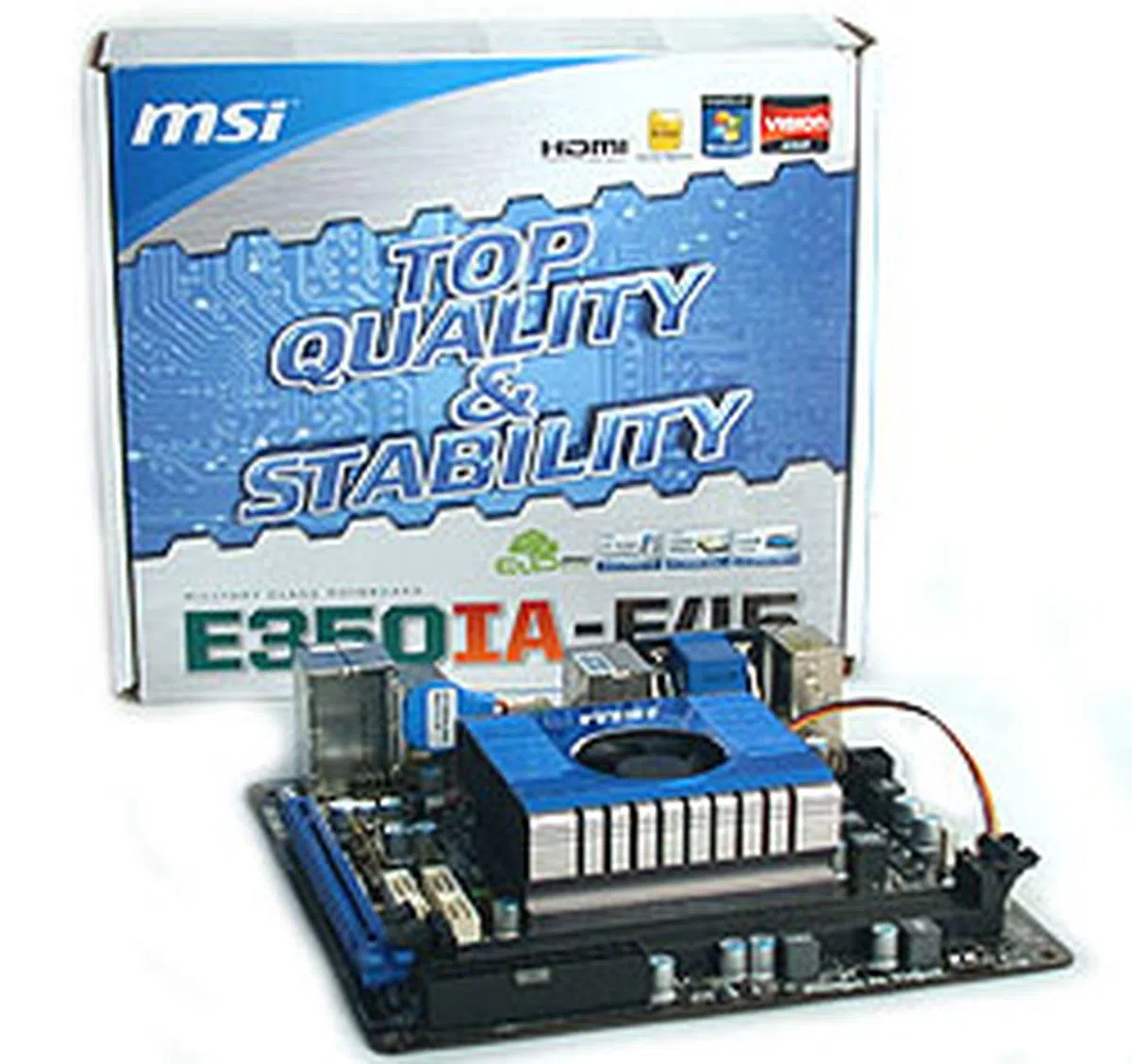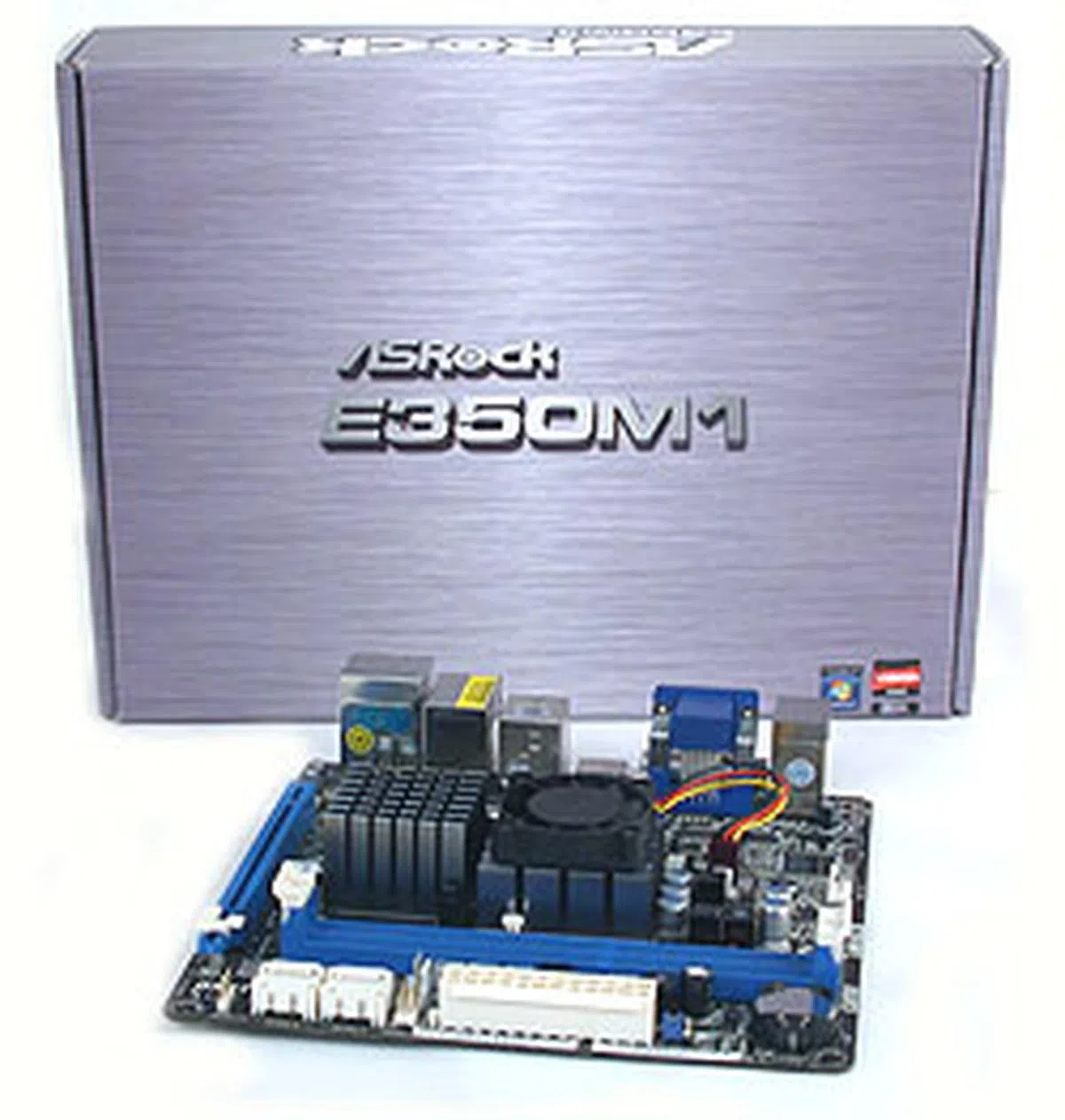AMD Fusion - Brazos Motherboards Tested!
Five years after we first heard of 'Fusion', AMD's Accelerated Processing Units (APUs) - integrating both CPU and GPU processing elements on a single die - have been released. We take a look at the AMD Brazos platform which feature the Fusion processors, with offerings from ASRock, Gigabyte and MSI.
AMD Brazos - The Atom Killer?
Yes, we know that 'killer' is probably one of the most overused word in the tech industry, but the first concrete example of AMD's Fusion initiative, the Brazos platform is exactly that. With a low power envelope of 18W TDP for the dual-core version, Zacate (or E-Series) and just 9W for the single-core Ontario (C-Series), it is the closest that AMD has come to matching Intel's Atom platform in terms of power consumption. It means that AMD may finally have a low-power chip able to fit into the netbooks and nettops segment that has been long dominated by Intel's Atom. For the full story behind Fusion, market segmentation and more primer information, do check out our .
The reason for AMD's optimism is the inclusion of a DirectX 11 capable GPU integrated as part of the CPU die (henceforth renamed as APU or Accelerated Processing Unit). Just like ? Exactly, except that AMD was arguably first with this concept. Ever since it bought over graphics chipmaker ATI in 2006, Fusion has been mooted as a way forward for the new combined entity. After many delays and setbacks, Fusion is finally a reality and it is represented today by the dual-core Zacate. The Zacate and the other models in the Brazos/Ontario family are listed below:
Model | Cores | Clock Speed | GPU | TDP |
E-350 (Zacate) | 2 | 1.6GHz | Radeon HD6310 | 18W |
E-240 (Zacate) | 1 | 1.5GHz | Radeon HD 6310 | 18W |
C-50 (Ontario) | 2 | 1.0GHz | Radeon HD 6250 | 9W |
C-30 (Ontario) | 1 | 1.2GHz | Radeon HD 6250 | 9W |
Based on the Bobcat architecture, which features a 64-bit out-of-order core with a 32KB L1 instruction cache, a 32KB L1 data cache and a 512KB L2, the 40nm Zacate consists of two such cores running at 1.6GHz. Instructions from SSE to SSSE3 are supported, though the newer ones like Intel's AVX obviously are not.
Its GPU component is made up by two SIMD with 40 stream processors each. It is a derivative of AMD's Cedar-class (~ Radeon HD 5450) of DX11 GPU, with a new Unified Video Decoder (UVD3) that can support hardware acceleration for DivX and Xvid. AMD calls it the Radeon HD 6310 and it comes with a default clock of 500MHz. The lower version, the HD 6250 has roughly half the clock speed at 280MHz. You can find out more about the architectural details of the new APU .
As mentioned, its low power consumption with a 18W TDP is one of the advantages that AMD is keen to talk about, and this is possible due to clock and power gating technologies. While we are more likely to find them in netbooks and even ultra-portable entry-level notebooks, we'll be testing the Brazos platform first on three similar mini-ITX motherboards (with the Zacate chip embedded onboard) that are meant for enthusiasts looking to hook up a low-cost desktop or HTPC.

This small chip is the Zacate dual-core APU, manufactured using a 40nm process and with a low TDP of 18W.

The 1.6GHz Zacate is part of AMD's Bobcat CPU architecture.
Paired with the Zacate APU is the AMD Hudson M1 (A50M) chipset or Fusion Controller Hub (FCH). It's connected to the Zacate APU though a 4-lane Gen 1.0 Unified Media Interface. With support for up to six SATA 6Gbps devices, four PCIe 2.0 lanes, HD audio and the usual plethora of USB 2.0 devices (14 to be exact), it's decent enough for its market segment, though more powerful APU variants in the future will require a correspondingly buffed up chipset that should ideally have more PCIe 2.0 lanes, Gigabit Ethernet and even USB 3.0 support.

The AMD Hudson chipset that provides the SATA 6Gbps support, PCIe 2.0 lanes and the USB ports looks even smaller than the Zacate APU, though it's manufactured on a 65nm process.
Moving on, click on the next page to read about the first of our three AMD Brazos motherboards, the ASRock E350M1.
ASRock E350M1
Our first taste of Fusion came with the ASRock E350M1. Like the other two boards in this roundup, it's in the mini-ITX form factor, with the Zacate APU embedded on the board. ASRock has gone with two small heatsinks, one for the chipset and the other for the APU, with a cooling fan on the APU heatsink. The fan itself is relatively quiet and both heatsinks were cool to the touch. Our laser thermometer recorded a peak temperature of 33 degrees Celsius during benchmarking, which bodes well for the platform's prospects in both the netbook and nettop spaces.
There are two DIMM slots for up to two DDR3 memory modules, with both operating off a single channel memory controller. ASRock has also limited the memory frequency to a maximum of 1066MHz, compared to the 1333MHz supported on the chipset. You can install up to 16GB of memory on it.
The chipset provides for four SATA 6Gbps ports, with ASRock opting for an eSATA 6Gbps connector at the rear panel. It somewhat makes up for the lack of USB 3.0 support on this board. The ports are located right next to the ATX power connector, and while they are facing upwards, shouldn't interfere with your other board components. The PCIe 2.0 x16 slot completes the expansion options on this tiny board, though with only four PCIe lanes, it's not that suitable for any discrete graphics card beyond the mid-range level.

The mini-ITX form factor doesn't leave much space for onboard components, but you'll get the essentials, from SATA 6Gbps support to a discrete graphics option too.

The usual trio of display outputs, HDMI, DVI and VGA, are accompanied by up to six USB 2.0 ports (no USB 3.0 however) and there's even an eSATA port. Optical S/PDIF and audio jacks complete the rear panel connectors.

There are four SATA 6Gbps ports onboard, with the eSATA option at the rear also SATA 6Gbps compatible.

The E350M1 supports a single channel controller with two DDR3 DIMM slots. The board only supports memory frequencies of up to 1066MHz, with a maximum capacity of 16GB.

This board only has one power connector - this 24-pin ATX power connector. A clear CMOS jumper is right besides it if you need to reset the BIOS.

A single PCIe 2.0 x16 slot for those who wish to use a discrete graphics card. However, it only has 4 PCIe lanes, so anything more than a mid-range graphics card is not recommended.
The board itself may seem packed, but its limited options also mean that there are no obvious layout issues; users may have to be careful routing some cables, especially with the onboard headers for the extra USB connectors lying in the middle rather than the edges of the board. ASRock has also opted for less costly non-solid capacitors in less crucial areas, reflecting the market segment that this board is targeted at.
We were a bit surprised to find ASRock's EFI BIOS on this low-cost board, but perhaps the vendor is shifting completely to this new BIOS for all its products. It comes with a pretty responsive user interface and there were even some voltage controls for those who wish to tweak. Overclocking however appears to be missing from the menu, in case you're wondering.

EFI BIOS is finally taking off. Similar to what we have seen of ASRock's implementation on its Sandy Bridge motherboards, it's also found on this Brazos board.
Gigabyte GA-E350N-USB3
Next up, Gigabyte's E350N-USB3 has its main selling point right on its name - USB 3.0. Thanks to the usual third-party controller, the Gigabyte comes with two USB 3.0 ports at the back. It helps to make this board more modern than the ASRock and complements the native SATA 6Gbps support nicely. Besides this addition, the board features are similar to what we have seen on the ASRock - a single PCIe 2.0 x16, four SATA 6Gbps ports and two DDR3 DIMM slots. There are some minor differences in implementation however.
For instance, one gets DDR3 1333MHz support on the Gigabyte, though only up to a maximum of 8GB memory. Realistically, it's more than adequate given that a single 4GB memory module is more likely to be readily available than a 8GB version currently. There's only a single heatsink that covers both the chipset and the APU, and the small cooling fan runs rather quiet. Temperatures of the heatsink however are slightly higher than the ASRock board and hovered between 40 and 46.5 degrees Celsius.

The next Brazos board, the Gigabyte GA-E350N-USB3, looks mostly similar to the ASRock, but Gigabyte has gone with a single, large heatsink for both the APU and the chipset, rather than two distinct heatsinks. Gigabyte also has added USB 3.0 ports.

Compared to the ASRock, the main difference is the presence of two USB 3.0 ports in blue. It also means you'll get just four USB 2.0 connectors instead.

Four SATA 6Gbps ports are placed quite close to the PCIe 2.0 x16 slot but perhaps unavoidable due to the limited PCB area.

Another difference - the Gigabyte supports up to 1333MHz DDR3 compared to 1066MHz on the ASRock. From what we have seen, 1333MHz is the official norm for the platform.

USB 3.0 support from a NEC controller as usual.

Again, unlike the ASRock, a 4-pin ATX power connector is located on the Gigabyte in addition to the 24-pin connector.

The unified heatsink with cooler on the Gigabyte board cools both the chipset and the APU. It's relatively quiet at its default settings.
Overall, the layout of the Gigabyte is not significantly different from the ASRock. Gigabyte has managed to add its own touches, in the form of its proprietary technologies. So you get Ultra Durable 3, ensuring that you'll only find solid capacitors onboard along with twice the usual copper content in the PCB. Its ON/OFF charge feature also helps to charge your iPhone/iPod devices quickly from the USB ports.
On the other hand, there's no EFI BIOS for the Gigabyte. It's the usual Gigabyte BIOS and while there's nothing wrong with it, there's just the impression that Gigabyte missed a chance to show its innovative side here. The BIOS does have some overclocking leeway, including a 20MHz (100 to 120MHz) range for the CPU host clock and even a maximum shared memory of up to 1024MB. Users can also tweak the VGA clock manually, between 300 to 2000MHz. The default is 500MHz of course.
MSI E350IA-E45
MSI's Brazos board, the E350IA-E45 is even more similar to the Gigabyte than the ASRock. Not including the general layout, which all three boards share to a large extent, the MSI too ensures that users are covered for the near future with two USB 3.0 ports. In fact, MSI is so upbeat about USB ports that it has even removed the DVI output in favor of more USB ports, so you'll find eight USB ports in total at the rear panel. Personally, we won't miss the DVI option too much, since newer displays (especially TVs) usually have HDMI while older ones come with at least a VGA. Both coaxial and optical S/PDIF outputs are also available compared to just the optical for the ASRock and Gigabyte.
DDR3 1333MHz is supported on the two DIMM slots on this board, with the total supported memory capacity at 8GB. From the BIOS, users can assign up to 512MB of the system memory to be made available for the integrated graphics.
A single closed heatsink with cooler fan is present, but at default, it was running a bit too loud for our liking. We recommend adjusting the fan speed in the BIOS if that's the case. Temperatures were generally very low, no doubt due to the fast spinning fan, and we recorded around 32 degrees Celsius for the heatsink.

The MSI E350IA-E45 shares quite a lot of similarities with the Gigabyte board before it, from the single heatsink to the 4-pin 12V CPU power connector and USB 3.0 support.

MSI has managed to fit eight USB ports, including two USB 3.0 ones. This is at the surprising expense of a DVI port; there are only VGA and HDMI options at the rear I/O panel. We did find both coaxial and optical S/PDIF outputs though.

The standard four SATA 6Gbps ports are located right besides the PCIe 2.0 slot, similar to where Gigabyte has placed them too.

1333MHz is also the maximum supported memory frequency. MSI states that they support up to 8GB of memory.

A Realtek ALC887 HD audio CODEC provides 8-channel sound.

This MSI board also requires a 4-pin ATX power connector.
Like the other Brazos boards, layout wasn't much of an issue on the MSI, despite the limited PCB space on the mini-ITX form factor. MSI has also opted for solid capacitors to ensure a certain level of quality, so it should probably cost a bit more than the ASRock. MSI's other distinctive technologies and features, like OC Genie and DrMOS are unsurprisingly not found on this budget board.
However, we were rather pleased with MSI's EFI BIOS on the E350IA-E45. Unlike the implementation we saw on MSI's P67 boards, the version here removed the fancy eye candy interface elements, leaving a clean and most importantly, a responsive user interface. Now, if we could only find that on MSI's higher end boards. As expected, there were few overclocking tweaks, DRAM voltage is just about the only thing you can adjust, along with memory timings and frequencies. Adjusting the integrated graphics clock doesn't seem possible from the BIOS.

A clean EFI BIOS from MSI that feels much smoother than the implementation on MSI's P67 boards. We definitely prefer this version.
Test Setup
We had to assemble from a range of systems to find the right comparisons for the AMD Brazos platform. In general CPU terms, it's supposed to be competing with the Intel Atom and Pentium 4, but its graphics capabilities appear to be competitive with older Intel HD Graphics (Clarkdale) and NVIDIA's Ion. We also wanted to see how it would stack up against AMD's older 780G platform. Due to the many different systems and platforms, there might be some discrepancies in operating systems, but we believe they are still appropriate here as references for the Brazos systems.
AMD Brazos (ASRock E350M1, Gigabyte E350N-USB3, MSI E350IA-E45)
- AMD Zacate (1.6GHz)
- 2 x 1GB Kingston HyperX DDR3-1333 (CAS 7-7-7-20) *DDR3-1066 for ASRock
- AMD Radeon HD 6310 (integrated, Catalyst driver 8.792, 256MB shared memory)
- Seagate Barracuda 7200.10 SATA
- Windows 7 64-bit Ultimate
Intel Core i5 (Clarkdale)
- Intel Core i5-661 processor (3.33GHz)
- 2 x 1GB Kingston HyperX DDR3-1333 (CAS 7-7-7-20)
- Intel DH55TC (Intel H55 Express chipset)
- Seagate Barracuda 7200.10 SATA
- Intel INF 9.1.1.1020 and Intel Rapid Storage Technology 9.5.0.1037
- Windows 7 Ultimate
ASUS AT3N7A-1 (Intel Atom 330 with NVIDIA Ion)
- Intel Atom 330 (1.6GHz) with 1MB L2 cache
- 2GB DDR3 memory
- NVIDIA ION (256MB)
- Seagate Barracuda 7200.10 SATA
- Windows 7 Vista Ultimate
AMD 785G
- AMD Phenom II X4 955 (3.2GHz)
- 2 x 1GB Kingston HyperX DDR3-1333 @7-7-7-20
- Seagate Barracuda 7200.10 SATA HDD (single NTFS partition of 200GB)
- Radeon HD 4250 (dependent on board's default clocks, 256MB frame buffer, Catalyst driver version 8.71)
- Windows 7 Ultimate
Benchmarks
The following benchmarks were used:
- Futuremark PCMark Vantage (ver 1.01)
- Futuremark 3DMark06 (ver 1.10)
- Far Cry 2
- Unreal Tournament 3 (ver 1.1)
- Quake 4 (ver 1.3)
- Blu-ray Playback Testing (Black Snake Moan, Superman Returns) using PowerDVD 10 (ver 2308)
Results - Futuremark PCMark Vantage
With the Intel H55 and AMD 785G systems having a vastly superior CPU, it's no surprise that the three Brazos boards fall behind. On the plus side, they do fare better than the Atom and NVIDIA Ion combo (ASUS AT3N7A-1). HDD performance was also quite competitive for the Brazos against the other systems.




Gaming Benchmarks
With its slower memory frequency of 1066MHz, the ASRock was slightly behind the other two boards in our gaming benchmarks. However, it's in these benchmarks that the Brazos platform showed its edge. In Quake 4 for example, the trio was significantly better than the Intel H55 or AMD 785G systems, which is quite commendable seeing the more powerful CPUs on the latter systems couldn't make up for the difference. Of course, it's still not that playable at around 25 fps, but it's close. They didn't fare that well in Far Cry 2, but the same could be said of Intel's latest, the HD Graphics 3000 on the Core i7-2600K.
Unreal Tournament 3, another admittedly old game, made a more persuasive case, as the Gigabyte and MSI boards hit an average of 30 frames (though the H55 was still a bit faster here with around 33 frames). In short, we aren't any closer to playing any of the latest games on these Brazos systems, but this may not matter to its intended audience anyway.




Blu-ray Video Playback
Since the Brazos systems aren't that capable for gaming, how about playing back HD videos and such? Well, it's something that AMD has demonstrated on many occasions and we're glad to report that our own testing have confirmed that Brazos is extremely capable of playing HD content like Blu-ray movies. We encountered no lag issues while playing the test clips and the CPU utilization rates, while not as low as some of its competitors, are sufficiently low for us. You have to factor in the vastly different CPUs being compared in these platforms. In that respect, the new UVD3 engine in these new chips certainly seems up to the task.

Power Consumption
Power consumption, probably the most important factor for Brazos when it comes to adoption by vendors in mobile devices like netbooks, was fairly similar between the three boards. We saw a total system power draw of around 50W for our test system, with the Gigabyte spiking up to 62W during benchmarks. It certainly compares well against other desktop platforms like the Intel H55 or AMD's older 785G. Of course, the rather large discrepancy in pure CPU performance between those two platforms and Brazos has not been factored in - if you can finish your workload in a shorter amount of time, that means the system can go into low-power hibernation mode or even be shut off. But if all you're doing is light productivity tasks, media playback and using the internet, these new low power systems are perfect for it.

Conclusion
We are barely into 2011 and on the CPU front, AMD has been making headlines, for both good and bad reasons. The big shocker of course, was the departure of , who was rumored to have been forced out due to its lack of an expansion strategy for semiconductors, especially for the mobile devices market. Or simply put, where is AMD on the tablet front? Considering that AMD has been struggling in its CPU business for a while, one would think that entering the competitive mobile space, with its multitude of ARM processors, would be the least of its concerns.
AMD's recent fourth quarter earnings report saw its revenue remain mostly flat, though it did make a profit of US$375 million. It's not bad as a whole, but the good news to follow was the announcement that AMD has shipped 1.3 million APUs so far, just weeks into its official debut (OEMs obviously has had access to the APU for far longer). With big names like Sony, HP and Lenovo releasing Fusion netbooks and ultra-portables in the coming months, AMD's fortunes in the notebook market certainly are rising. However, the desktop front remains highly uncertain, with Bulldozer, its next-gen CPU architecture looking to be delayed again.
Therefore, the positive thing to take away is that AMD's Fusion APUs have found some traction among OEMs, though it's still early days yet whether consumers will embrace this potential Atom 'killer'. From what we have seen, some motherboard vendors too are offering Brazos barebones systems (motherboard and APU) for enthusiasts to configure their own low-power systems. It's a rather niche market, with HTPC enthusiasts the likely buyers; mainstream consumers will go for Fusion powered nettops and mini-desktops from OEMs instead.
These Brazos mini-ITX platforms are decent for HD playback and in some cases, beat Intel's latest HD Graphics, especially if the application is slanted towards the GPU portion. There's no doubt that the GPU performance of Brazos is better than Intel's. The question is whether this can compensate for its limitations in general CPU performance, as Intel's HD Graphics are found on much faster Core i3 processors. At least AMD seems to have solved the issue of power consumption, with the relatively low power draw that we have seen, it's very feasible to see these APUs compete with Intel's Atom and even some Intel CULV processors. Heat too is a non-issue, though this too is more pertinent for the mobile space. It's a promising platform that bodes well for AMD and its upcoming Fusion products like .
As for the three boards reviewed today, they are mostly similar in performance, with the ASRock taking a slight hit due to its lower memory frequency. The Gigabyte and MSI boards also come with more features, from USB 3.0 to their own proprietary ones, and generally have a more expensive feel to them (read solid capacitors). ASRock has informed us that there is a USB 3.0 model available, the E350M1/USB3 that will go for around S$218. That's a bit more than the S$185 for the reviewed model. For a processor and motherboard combo, this price is definitely affordable and with some DRAM, a hard drive, a chassis and one is good to go.
Even though they cost more, we are inclined to go with the Gigabyte and MSI, just for the sake of ensuring that our systems are mostly future-proof (USB 3.0) and importantly, will last long enough to see the mass adoption of USB 3.0. Their marginally better performance also tilts the advantage in their favor, though those who have an urge to tweak may find the Gigabyte the better of the two, thanks to options that allow some sort of overclocking for the APU's clock and graphics core.
Model | Features | Performance | Value | Overall | Estimated Retail Price |
ASRock E350M1 | 7.5 | 8.0 | 8.0 | 8.0 | S$185
(S$218 for USB3 model) |
Gigabyte GA-E350N-USB3 | 8.0 | 8.5 | 8.5 | 8.5 | S$239 |
MSIE350IA-E45 | 8.0 | 8.5 | 8.5 | 8.5 | S$219 |
 |  |
 |  |
 |  |
 |  |
Our articles may contain affiliate links. If you buy through these links, we may earn a small commission.